For the temperature increase over time t, the following equation applies for non-respiring goods (goods with no respiration heat)
 |
| where | t: | Is time without refrigeration (in s) |
| ΔT: | Average increase in temperature of the load after time t (in°C) | |
| ΔTambient : | Difference in temperature between the internal and external temperatures at the start of the warming process (in°C) | |
| A: | Surface area of the container (in m²) | |
| k | Heat transition coefficient of the container in (in W/m²K) | |
| m | Mass of the load (in kg) | |
| c p: | Specific heat capacity of the load (in J/kgK), see Table 13 |
The heat transition coefficient of the container can be taken to be 0.4 W/m²K. In accordance with the ATP agreement, new containers must fulfill this value in order to be granted a permit for use in cross-border transportation. New containers generally achieve values of approximately 0.3 W/m²K, but the insulation is subject to ageing.
Since the majority of frozen goods are made up mainly of water, some with more and some with less fat content, the heat capacity lies between 1.1 and 2.1 kJ/kgK, and for the majority of goods an average value of approximately 1.7 kJ/kgK can be assumed (see Table 13). In an unfrozen state the heat capacity is approximately twice as high, and thus the increase in temperature will take longer.
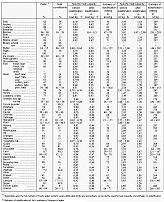 |
(Click on the graphic to enlarge.) Table 13: Specific heat capacities of various foodstuffs, taken from Pohlmann, Taschenbuch der Kältetechnik (Ready reference of refrigeration technology) |
Table 14 (made up of eight individual tables) gives, for a typical refrigerated container, the average temperature increase of the load depending on container type, cargo mass, and the difference in temperature compared to the ambient temperature. These values can be used to perform rule of thumb estimations for the temperature increase.
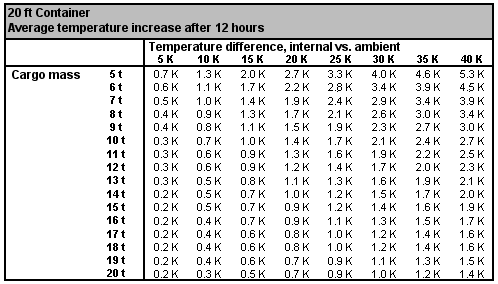 |
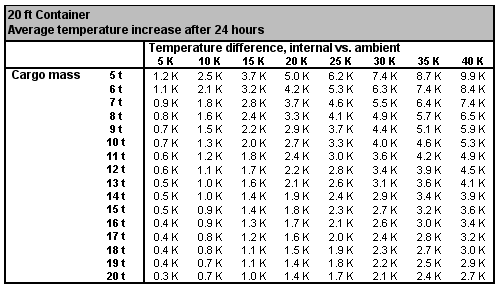 |
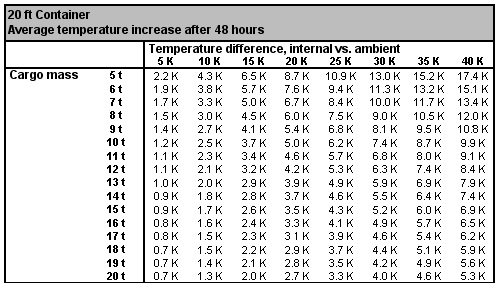 |
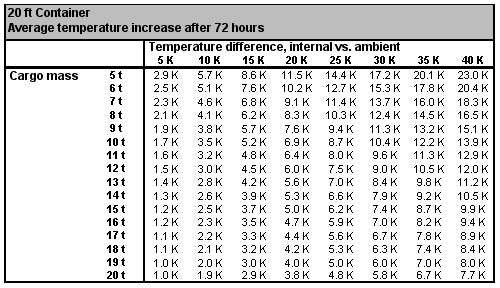 |
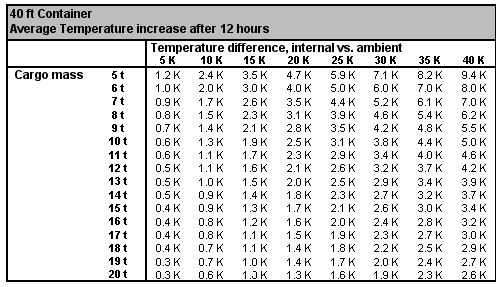 |
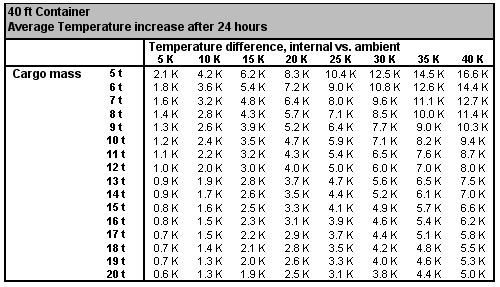 |
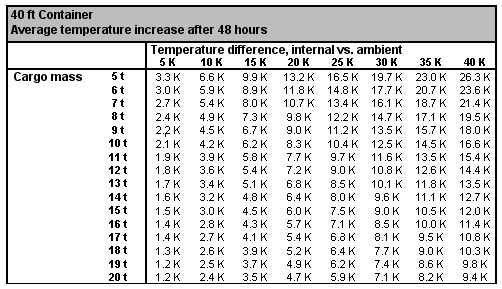 |
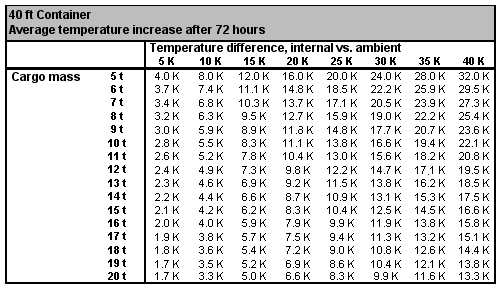 |
| Table 14: Average increase in temperature of the load for various container sizes, valid for frozen goods |
Example:
A 20' container with a load of 20 t meat and an initial temperature of -20°C is not refrigerated for a period of two days. The ambient temperature is 20°C. This gives a difference in temperature of 40°C, and from table 14, we obtain an average temperature increase of 5.3°C. Thus the temperature of the meat rises, on average, to -14.7°C.